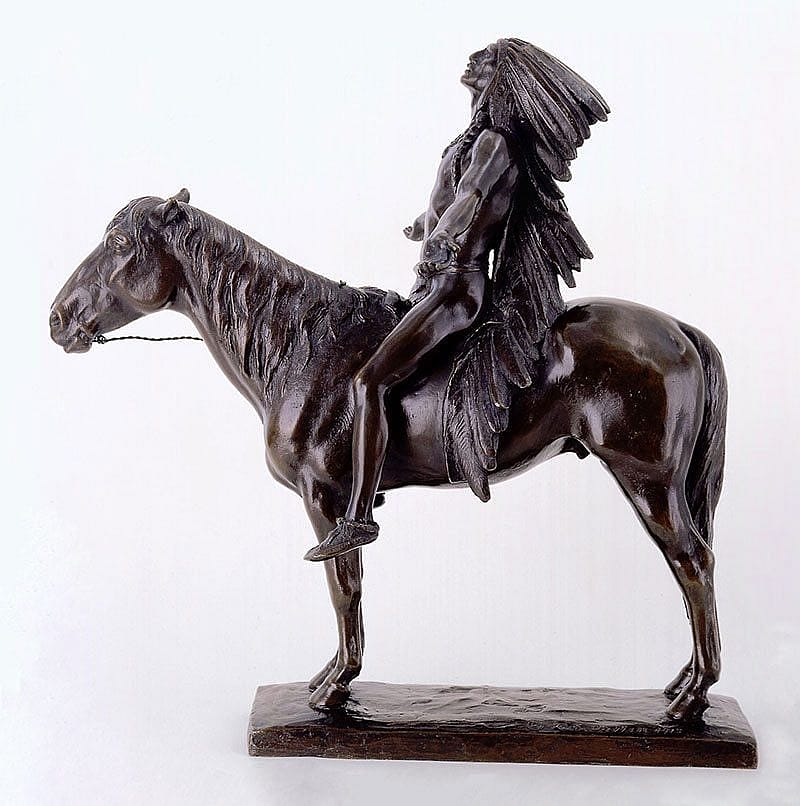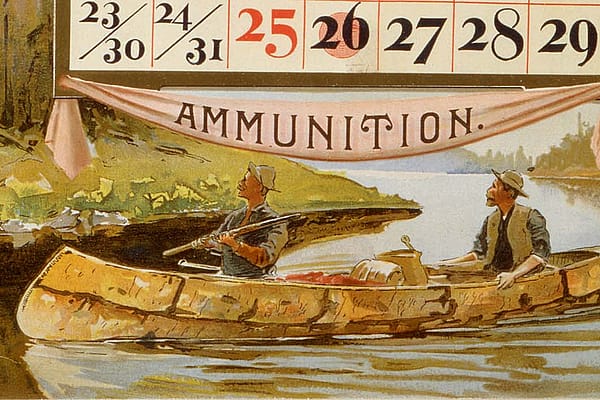Treasures from Our West: “Appeal to the Great Spirit” by Cyrus E. Dallin
Originally featured in Points West magazine in Spring 2015
Born in Springfield, Utah, in 1861, Cyrus E. Dallin spent his childhood among the Paiute and Ute Indians. There he developed a close familiarity with American Indians and their struggles with the United States government. Born the same year as noted western artist Frederic Remington, Dallin’s talent and unique understanding of Native communities made him one of the most successful sculptors of American Indian subjects at the time. His monumental sculpture, Appeal to the Great Spirit, garnered much acclaim, including a gold medal at the Paris Salon in 1909. The original now stands at the Museum of Fine Arts in Boston.
Appeal to the Great Spirit is the fourth and final bronze sculpture in the popular series The Epic of the Indian. In this sculpture, Dallin conveys the American Indian’s strained relationship with the federal government through a minimalist equestrian sculpture. The Indian sits, eyes cast upward and arms outstretched on either side. As negotiations for peace between Native American and white communities seemed hopeless, the Sioux’s action epitomizes surrender to futility. Resonating with spiritual vulnerability, Dallin’s sculpture captures a simple, yet moving plea to the Great Spirit for supernatural deliverance.
Cyrus E. Dallin (1861 – 1944). Appeal to the Great Spirit, 1913. Bronze, 21.375 x 22 x 14.325 inches. Clara Peck Purchase Fund. 17.70
Post 166
Written By
Nancy McClure
Nancy now does Grants & Foundations Relations for the Center of the West's Development Department, but was formerly the Content Producer for the Center's Public Relations Department, where her work included writing and updating website content, publicizing events, copy editing, working with images, and producing the e-newsletter Western Wire. Her current job is seeking and applying for funding from government grants and private foundations. In her spare time, Nancy enjoys photography, reading, flower gardening, and playing the flute.










